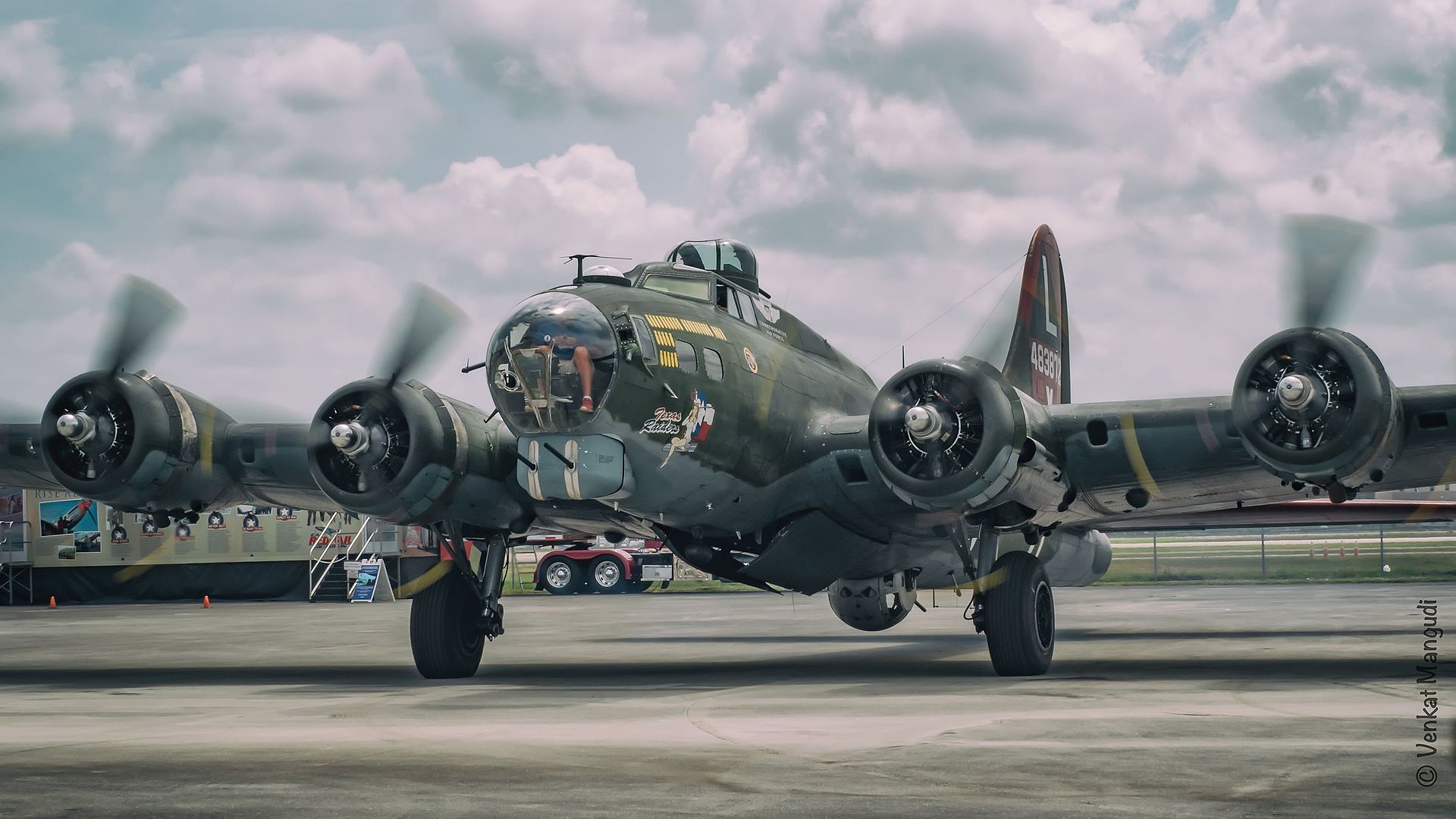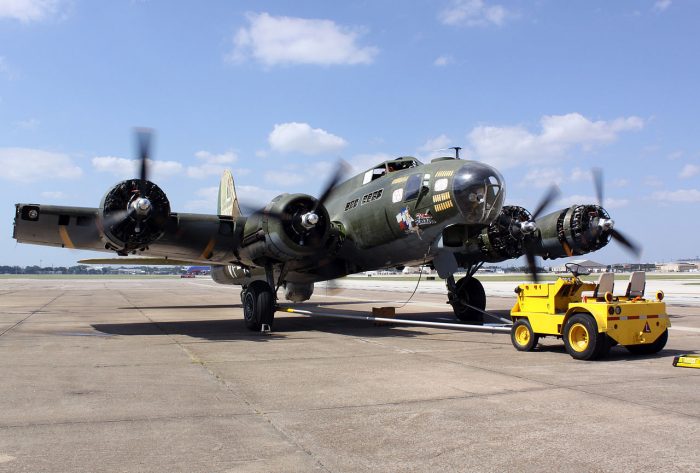Texas Raiders B-17 Flying Fortress Returns to the Skies

Texas Raiders’ owners Gulf Coast Wing of the Commemorative Air Force, based in Conroe, Texas, successfully swapped out the failed engine on their B-17 Flying Fortress warplane in time to fly to an event at McKinney, Texas, on October 17, 2020.
The engine developed problems as they were returning from a Labor Day event at the Arkansas Air and Military museum. To be safe, the crew landed the plane in Texarkana, Texas, rather than risk continuing to fly on to their home base in Conroe.
The B-17 Texas Raiders of the Gulf Coast Wing relied on donors, supporters and their own maintenance crew to get the faulty engine number 3 swapped out in time to make the October event.
The Commemorative Air Force consists of 11,000 members in 65 units across the United States. They maintain a fleet of 70 historic aircraft.

The Gulf Coast Wing maintains a Navy JRB-6 Little Raider in addition to the B-17.
According to the B-17 Texas Raiders, there are only five B-17s still flying in the entire world. The Texas Raiders have restored their B-17G to its wartime configuration both inside and out thanks to the work of their volunteers.
The Texas Raiders plane has the fifth-most military time out of over 12,000 B-17s ever built and is the third youngest B-17 still in existence. It has been used as a living history museum longer than any other B-17, having served in that capacity for 53 years.
This plane was built at the Douglas Aircraft factory on July 12, 1945, the last day of production at the plant. It was sold to the Navy but with the war coming to an end, it was expected to go immediately to the scrapyard.
Instead, the Navy chose this plane among twenty B-17s to be part of the Cadillac II project. Cadillac II was the first successful implementation of an Airborne Early Warning and Control system. Its bomb bay doors were sealed shut and it was outfitted with extra fuel tanks and radar and other technology to fulfill its new function.
The plane continued in this role until 1955, when it was flown to the Storage Facility at Litchfield Park, Arizona. It was officially retired on August 25, 1955, after 77 months of service.

In 1957, the plane was purchased by Aero Service Corp for $17,500. They used it for aerial surveying and photography and occasionally to carry cargo. During its time with Aero it was used to map the Pacific Coast of the US and also to map Venezuela and Chile. It participated in a project to record an eclipse of the sun. It participated in natural gas and oil surveys. It was the first aircraft to photograph the entire South American continent.
The CAF purchased the B-17 from Aero in 1967 for $50,000. It was the first B-17 ever purchased for the express intent of using it for education and as a flying museum. Today, it is estimated that Texas Raiders is worth $8-12 million.
In 1973, Texas Raiders was officially chosen as the name for the group’s B-17. In 1974, it was officially assigned to the Gulf Coast Wing.
Another Article From US: Pilot Gets Chance to Live Dream to Fly Spitfire
In 1977, the group decided on the current paint scheme for the plane, including the nose art. It is intended to accurately depict the paint job of a plane serving in the 533rd Bomber Squadron, 381st Bomber Group but not any specific plane from that era.
